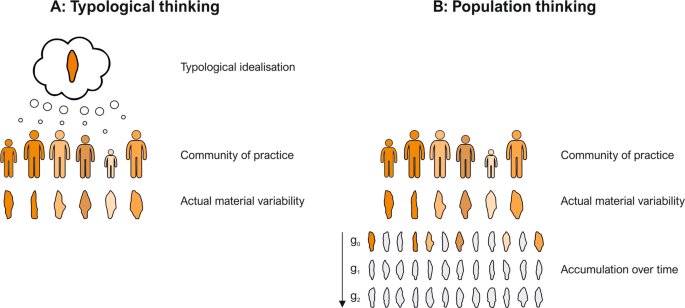Evolutionary Thinking and Knowledge Management: An Epistemological Approach to Evolution
 |
| Caio Santos Rodrigues ’16 |
We evolved. This is utterly a convincing
sentence to attract all the attention on understanding human being and its
existence. However, I have some doubts regarding obtaining the knowledge from
evolutionary aspects without using very essential field in philosophy. I am very raw and zealous life science
students who try to understand all the mechanism and phenomena into the core of
nature. My main material for this field is the Life and all living thing. My
environment for these vital investigations is the Nature itself. Basically I am
trying to learn fascinating biological events by taking into consideration
non-living things as well. The evolution and medicine are the main impetus for
the life scientists for decades. As Aristoteles said, every single human have
an inner curiosity. This fuel to worry about our body and nature caused
proposing an evolutionary explanation on human being in lieu of believing a
very talented God to create all the living things in the past. I gently forced
myself to think about relation between Knowledge Theory & Evolutionary
Thinking. Every single knowledge packet on evolution are not always observable
and most of the time we are not able to mimic all the evolutionary events that
occurred millions of years ago. However, we can deduce same parameters like
Natural Selection, Genetic Drift, and Random Mutations by looking these ancient
clues. We are able to use computational tools to elucidate evolutionary sides
of pathogen resistance against time.
 |
| Wikipedia Commons |
There are several ways and styles in order to
deal with Evolutionary Thinking and these styles may contribute the knowledge
management for evolutionary study fields. We can subcategorize these different
ways as Typological Thinking, Population
Level Thinking & Evolutionary Tree Thinking.
Plato was one of the most eminent philosophers
of the ancient Greek, no doubts; he suggested theory of the Idea to categorize
all the things that we know. His excellent student Aristoteles revised his
master’s approach to approach categorizing the things. His proposition was the
theory of Types which referred essence of things using Forms. Types materialize
the essence of the thing. As a definition, If I say the apple, everyone can easily envision an apple inside of their
mind. In a same manner, If I say the
eukaryotic cell, every single biologist can illustrate entire structural
properties and shapes of an eukaryotic cells. This 'Formal' thinking is always useful for idealizing all other things on the earth i.e the car, the tree, the cat, the socks, the
door handle, the atom etc. We can
summarize the ideas of Plato and Aristoteles by using simple rule: If you have seen one, you have seen them all
(Stearns, S).
 |
| Nature, Riede F, 2019. |
Frankly speaking, the Typological Thinking is
very useful in terms of cell biology, physiology or anatomy because we are
using the Forms to describe the cell, the arms & wings or the brain. We generalize these things when we say. For every cell biologist,
there is a universal cell structure, if you say them the cell. Surprisingly enough, typological thinking is not the case
for evolutionary thinking (most of the time). So we need different ways or
style to talk about evolution.
Evolutionary thinking always tussles with variations in a population or a trait.
Therefore, these variations impair our Typological Thinking style since we
cannot generalize the things. For this reason, Population Thinking is a life-saving method for investigators who
deal with variations in these study materials like population or any genetic
traits. This style is very beneficial
anything that evolves very rapidly such as antibiotic resistance and cancer
malignancy. So we can benefit from frequency distributions, probabilities and
patterns of variations (Stearns, S). We do not have certainties but we have
probabilities of the changing in the things over the time. This approach is
very efficient style to think carcinogenesis. As most of the cancer cell had a
population of clones which were made up of cancer stem cells. Every bifurcate
clone is not same and for that reason we cannot generalize all the cancer cells
as an identical individual.
 |
| Tree of Life, National Geographic |
Last but not least, we generally need very well
defined basis while investigating problems, in our case, evolution. Justification
of the problem need some reductions like first-reason, primitive thing and ancestor. In evolutionary thinking, investigator
uses ancestor as basis for his/her
studying material that have diverse variations. For example, we can investigate
the first ancestor of the primates or first descendent that have spinal cord.
We can even talk about first common ancestor of all living things. This and
last style of thinking is called Tree thinking
and derives a connection between species within a phylogenetic tree. This
tree has some important clues to elucidate the history and changes of
evolutionary events by looking at last shared ancestor. Why is drawing a tree important
in terms of evolution? We are able to map two different biological properties
of the species for instance correlating size of testes and brains primates.
Many of scientists may use these multilateral parameters that are related to
each other. As Stephan Stearns mentioned, we can construct a tree that contain
knowledge (or at least information) about age and metastatic cancer. This might
be crucial for early detection and life-saving.
As a conclusion, there are several ways to
solve problems in evolutionary thinking. Any investigator should be able to
choose the most proper way to solve his/her problem depending on type of
question. However, I am very confident to say that Population & Tree Thinking are the neatest styles for coping with
problems in evolution and biological changes (variations). This is just because
important that Knowledge Management is immensely substantial by delving into
biological problems. Wrong way selection can corrode the hale of solution
behind the problem. We do not want to erode our intellectual accumulation by these
parasites.
Sources
Sources
- Stearns sc, medzhitov r. evolutionary medicine. sunderland: sinauer associates, inc; 2015.
- İlkçağ Felsefe Tarihi 3: Aristoteles
- Principles of Evolution, Ecology and Behavior, Open Yale Courses (https://oyc.yale.edu/ecology-and-evolutionary-biology/eeb-122)
Mustafa
Ozturk
Started
in: Copenhagen, 10 II 2020
Revised
in: Kayseri, 10 IV 2020

Comments
Post a Comment